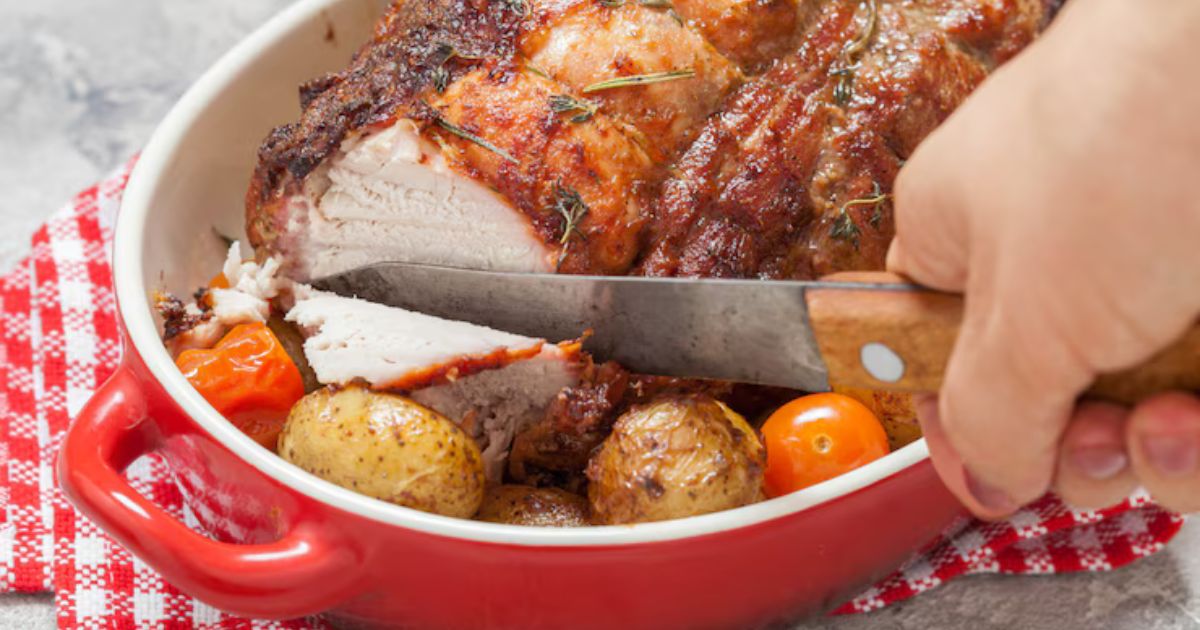Leitão is more than just a dish in Portugal—it’s a cultural treasure. Often associated with celebration and tradition, this succulent roasted pig is a hallmark of Portuguese cuisine, especially in the Bairrada region. Crispy skin, juicy meat, and a symphony of garlic and spice define what makes leitão so unforgettable. It’s not your everyday meal—it’s a culinary event.
Origin of Leitão in Portuguese Culture
Leitão has its roots deeply planted in Portuguese heritage, particularly in Bairrada, a region in central Portugal. For centuries, families have roasted suckling pigs in wood-fired ovens during major festivities. These pigs, typically weighing between 5–8 kg, are marinated and slow-roasted to perfection, resulting in golden, crispy skin and incredibly tender meat.
Why Leitão is So Popular
The appeal of leitão lies in its taste, texture, and the joy of sharing. Its popularity comes from generations of tradition, and today it’s not just enjoyed in homes but is a key feature in many restaurants and food festivals across Portugal. Locals love it, tourists crave it, and chefs take pride in perfecting it.
Ingredients That Make Leitão Unique
The simplicity of the ingredients is what makes leitão magical. The marinade typically includes garlic, white pepper, salt, lard, and sometimes piri-piri (a Portuguese chili). Some variations also use bay leaves, paprika, or even lemon for added aroma and flavor. The meat absorbs the spices slowly, resulting in layers of taste in every bite.
Choosing the Right Pig for Leitão
For authentic leitão, a young piglet—usually around 2 to 6 weeks old—is preferred. The meat at this age is exceptionally tender, and the skin, when roasted, becomes perfectly crisp without being tough. The pig should be of high quality, preferably free-range, and freshly slaughtered to maintain optimal flavor.
Traditional Preparation Process
The process of making leitão is meticulous. First, the pig is cleaned thoroughly and marinated both inside and out. The marinade is often rubbed directly onto the meat and under the skin to ensure the flavors penetrate. The pig is then sewn up, traditionally with a vine branch, and skewered for roasting.
Wood-Fired Oven Roasting Method
The traditional cooking method involves roasting the pig in a wood-fired oven using eucalyptus or olive wood. This gives the meat a distinct smoky flavor that can’t be replicated with modern ovens. The pig is roasted slowly, turned regularly, and basted with more lard or marinade during the process. It typically takes around 2–3 hours, depending on size.
Achieving Crispy Skin and Juicy Meat
One of the signatures of a perfect leitão is the contrast between the crispy, crackling skin and the juicy, tender interior. This balance is achieved through careful control of heat. Initially, the temperature is high to crisp the skin, then lowered to allow the meat to cook through evenly without drying out.
Leitão Variations Across Portugal
While Bairrada is the most famous for leitão, different regions have their own takes. In some parts of Portugal, the spices are adjusted, or the pig is stuffed with rice or herbs. Some cooks use beer or wine in the marinade. While the core method remains the same, these regional twists give the dish a local personality.
Best Side Dishes to Serve with Leitão
Traditionally, leitão is served with batatas fritas (Portuguese-style fries), orange slices, and a sharp, vinegary salad. Some also enjoy it with a side of spicy sauce or piri-piri oil. These sides cut through the richness of the pork and add brightness to the meal.
Leitão in Portuguese Festivities
Leitão is a centerpiece in many Portuguese celebrations—weddings, religious festivals, and family reunions. It’s a dish that brings people together, served in large platters for everyone to enjoy. The communal aspect is what truly makes leitão a symbol of joy and hospitality.
Modern Takes on Leitão
Chefs today are getting creative with leitão. Some make leitão sandwiches, others serve it as a gourmet dish with wine reductions and exotic sides. It’s even featured in high-end restaurants as a small-plate delicacy. These innovations keep the tradition alive while inviting new generations to fall in love with it.
How to Make Leitão at Home
Making leitão at home might not be easy, but it’s doable with some adjustments. You can use a smaller suckling pig and roast it in your oven at a controlled temperature. Marinate it overnight, use foil to protect the skin early in roasting, and finish it at high heat to get that crispy texture. A meat thermometer helps ensure perfect cooking.
Where to Eat Leitão in Portugal
If you ever visit Portugal, head to Mealhada in the Bairrada region—it’s the capital of leitão. Restaurants like Pedro dos Leitões and Meta dos Leitões are iconic spots where you can taste the real deal. Locals say you haven’t truly experienced Portuguese food until you’ve had leitão here.
Pairing Leitão with the Right Wine
Leitão pairs beautifully with Bairrada’s own sparkling red wine, made from the Baga grape. The acidity and bubbles cut through the richness of the pork, making each bite even better. If you’re not into sparkling reds, a crisp white or light rosé can also complement the dish nicely.
Cultural Significance of Leitão
Leitão isn’t just food—it’s storytelling through flavor. Each bite carries the traditions of Portuguese families, the warmth of their gatherings, and the pride of centuries-old culinary mastery. It’s a dish that represents identity, care, and passion.
Health Considerations When Eating Leitão
Leitão is undeniably rich, so moderation is key. It’s high in fat, especially if you indulge in the crispy skin. Pairing it with light sides and avoiding heavy sauces can help balance the meal. As with any indulgence, enjoying it occasionally makes it all the more special.
Tips for First-Time Cooks
If you’re attempting leitao for the first time, start small. Consider using a pork shoulder or belly as a practice run. Focus on the marinade, monitor your oven temperatures, and don’t rush the process. Patience is the secret ingredient to perfecting this dish.
Conclusion
leitao is more than just roasted pork—it’s a deep-rooted Portuguese tradition that unites flavor, family, and festivity. Whether you’re tasting it for the first time in Portugal or recreating it in your kitchen, the experience is unforgettable. From the crackle of its skin to the juicy tenderness within, leitao is a love letter to Portuguese cuisine, heritage, and heart.
FAQs
What does “leitao” mean in English?
“leitao” translates to “suckling pig” in English, referring to a young piglet roasted whole.
Can I make leitao without a wood-fired oven?
Yes, a conventional oven works too. The key is slow cooking and controlling the heat for crispy skin.
How long should I marinate the pig?
Ideally, marinate it for at least 12–24 hours to allow flavors to deeply infuse the meat.
What’s the best wine to pair with leitao?
Bairrada sparkling red wine is traditional, but any acidic, medium-bodied wine works well.
Is leitao spicy?
Not usually, unless you add piri-piri to the marinade. It’s more savory and aromatic than spicy.











